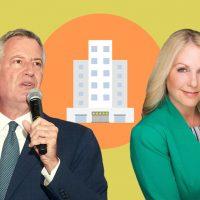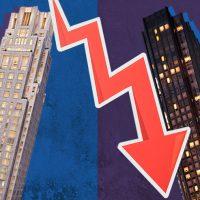It may not be saying much, but hotel fundamentals are up in some major U.S. cities.
Overall, hotel occupancy in the U.S. has been improving since early April and last week hit 30.1 percent, up from 28.6 percent the week prior, according to the latest data from STR.
STR’s Jan Freitag said that Transportation Security Administration checkpoint counts show that more people are flying in recent weeks, and that the weekly number of hotel rooms sold across the U.S. topped 10 million for the first time since the end of March.
During the worst weeks of the coronavirus pandemic, occupancy rates in Miami, Los Angeles, New York and Chicago all fell near or below 20 percent, sending revenue per available room through the floor. Some of the improvement since then is likely attributable to hotels renting rooms to essential workers and governments for housing the homeless.
Read more


While the occupancy rate in New York fell from 44.9 percent to 43.7 percent last week from a week prior, no less than 40 percent of the market’s hotels have been occupied since the week of April 19. That correlated with an increase in revenue per available room to above $50 for the first time since the second week of March. Last week, revPAR dipped to $53.39 from an eight-week high of $55.52.
For context, in the first week of March, revPAR was $136.05 and 72.1 percent of rooms were booked. The average daily rate — the average of what hotels brought in per room — fell steadily over the last two months, but has stayed between $122 and $124 since the week of April 12 to 18.
Fundamentals in L.A. are generally trending upward. Occupancy hit 35.5 percent last week, up from 33.7 percent the week prior. RevPAR has also increased, rising to $36.46 last week from $34.57 in the last week of April. Still, those figures are less than a third of what they were before stay-at-home measures were enforced. ADR continues to slip in L.A. and hit $102.66 last week.
Occupancy rates fell in Miami to 24.4 percent last week from 26.2 percent the week prior, which was the highest rate since mid-March. RevPAR also slipped, week-over-week, to $20.80 from $23.31. That’s about seven times lower than in the second week of March.
Chicago recorded a slight uptick in occupancy, to 24.4 percent last week from 24.2 percent two weeks ago. Occupancy has been steadily trending upward since the last week of March. RevPAR was more or less flat at about $17.60 over the last two weeks.
Chicago’s central business district is also seeing more bookings. Occupancy hit 13.9 percent last week from 13.4 percent a week prior. Occupancy was about 53 percent in early March. RevPAR improved, week-over-week, to $13.84 from $13.77.
Destination cities such as Galveston, Texas and Panama City, Florida have also shown improvement since local governments started to ease coronavirus restrictions.
Last week, Hawaii’s Oahu Island saw the largest drop in occupancy than any other submarket, with just one in 10 rooms occupied — an 87.1 percent decrease from last year.
